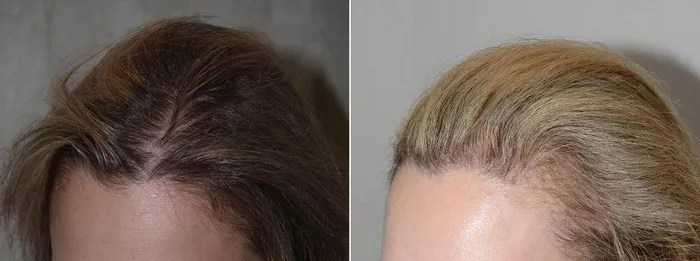For individuals grappling with hair loss, the desire for a natural-looking hair transplant is paramount. Advances in hair restoration techniques have ushered in a new era, making it possible to achieve results that seamlessly blend with the existing hair. In this article, we explore the key factors that contribute to the most natural-looking hair transplant.
1. Understanding the Artistry of Hair Transplants
Achieving a natural-looking hair transplant is not just about restoring hair follicles; it’s an art form that involves meticulous planning and execution. The best hair transplant surgeons combine their medical expertise with an artistic sensibility to design a hairline that complements the individual’s facial features and natural hair growth patterns.
2. FUT vs. FUE: Weighing the Options
The choice between Follicular Unit Transplantation (FUT) and Follicular Unit Extraction (FUE) plays a significant role in the naturalness of the final result. FUT involves harvesting a strip of scalp from the donor area, while FUE involves extracting individual follicular units. While both techniques can yield natural-looking results, FUE is often preferred for its minimally invasive nature and the ability to extract individual follicles without a linear scar.
See Also: Does FUE Have Any Side Effects: Everything You Need To Know
3. Natural Hairline Design: The Frontline of Authenticity
Crafting a natural-looking hairline is a delicate and crucial aspect of a successful hair transplant. The hairline should be age-appropriate, irregular, and mimic the native hairline’s natural variations. Surgeons skilled in the art of hair transplantation take into account factors such as hair density, texture, and direction to create a seamless transition between transplanted and existing hair.
4. Mimicking Natural Hair Growth Patterns
A key element in achieving a natural-looking hair transplant lies in replicating the natural growth patterns of hair. This involves considering the angle, direction, and orientation of the transplanted hair follicles to blend seamlessly with the surrounding native hair. Meticulous attention to these details ensures that the transplanted hair integrates harmoniously, avoiding an artificial or noticeable appearance.
5. Microscopic Grafting Techniques: Precision at its Finest
Microscopic grafting techniques involve dissecting hair follicles under high-powered microscopes, allowing for the extraction of individual follicular units with precision. This level of detail ensures that the transplanted hair closely resembles the natural growth patterns, resulting in a hair transplant that is virtually indistinguishable from native hair.
6. Customization for Each Individual: No One-Size-Fits-All Approach
There is no one-size-fits-all approach to hair transplants, especially when aiming for a natural appearance. A skilled surgeon tailors the procedure to each individual’s unique characteristics, considering factors such as hair type, texture, and the specific pattern of hair loss. This personalized approach contributes to a result that looks entirely natural and complements the patient’s overall aesthetic.
7. Hair Graft Distribution: Creating Density Gradually
A common pitfall in achieving a natural-looking hair transplant is attempting to achieve maximum density in a single session. Gradual density build-up over multiple sessions allows for a more natural progression and prevents the “pluggy” appearance often associated with poorly executed hair transplants. This approach also considers the natural spacing and distribution of hair follicles for an authentic result.
8. Post-Operative Care and Healing
The success of a hair transplant extends beyond the surgical procedure itself. Proper post-operative care and healing are integral to achieving a natural-looking outcome. Patients must follow the surgeon’s guidelines for washing, moisturizing, and protecting the transplanted area to ensure optimal healing and minimize the risk of complications.
9. Patient Selection and Expectation Management
Not every individual is an ideal candidate for a hair transplant, and managing patient expectations is crucial for overall satisfaction. A reputable surgeon assesses factors such as donor hair availability, the stability of existing hair, and the overall health of the patient before recommending a hair transplant. Realistic expectations play a vital role in achieving a result that feels natural and authentic.
10. Advances in Technology: The Future of Natural-Looking Hair Transplants
Continual advancements in technology, including robotics and artificial intelligence, are shaping the future of hair transplantation. These tools aid surgeons in achieving even greater precision and accuracy in the placement of grafts, contributing to increasingly natural results. Staying abreast of these technological developments ensures that patients have access to the most advanced and effective solutions.
Conclusion: Where Science Meets Artistry
In the quest for the most natural-looking hair transplant, the convergence of medical expertise and artistic precision is paramount. From meticulous hairline design to microscopic grafting techniques, every aspect of the procedure contributes to the authenticity of the result. As technology continues to advance, the future holds even more promising possibilities for those seeking a seamless transformation. A successful hair transplant not only restores hair but also restores confidence, allowing individuals to face the world with a natural and undetectable mane.


